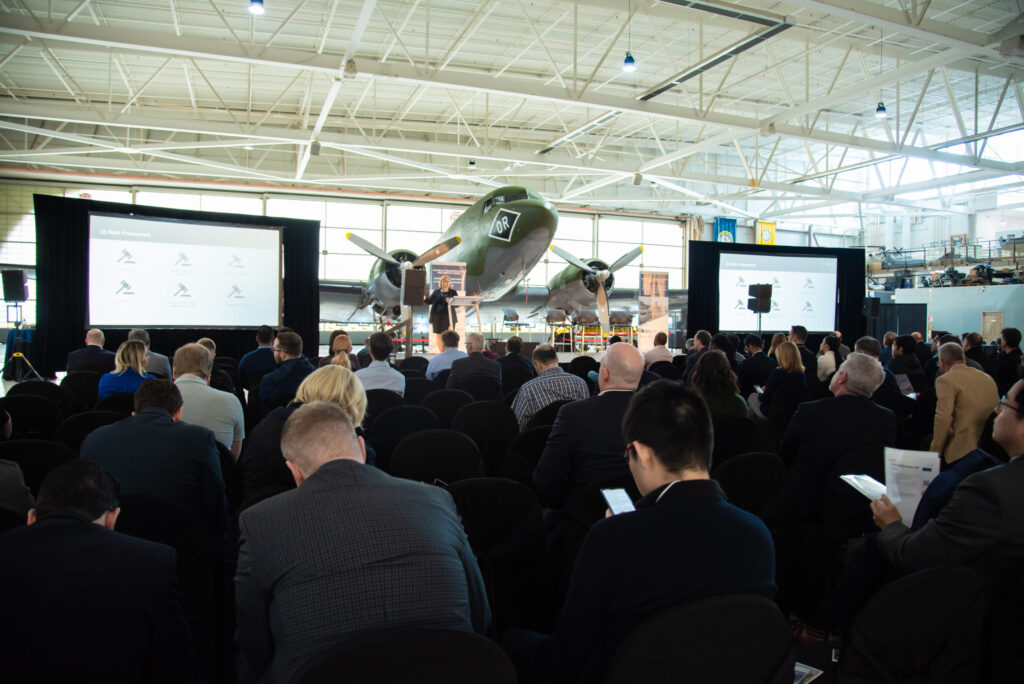Future of Transportation and Mobility Series explores ‘Intelligent Infrastructure and Connected/Autonomous Vehicles’ in second annual conference
Hamilton, Ont., Feb. 13, 2020 – Smart cities are needed to pave the road to a sustainable and prosperous future driven by connected and autonomous vehicles (C/AVs), according to thought leaders, technology innovators and policymakers who attended the “Intelligent Infrastructure and Connected/Autonomous Vehicles” conference yesterday in Hamilton, Ont.
 “C/AVs will not only revolutionize transportation but also the way we live, work and play. This has enormous implications for cities and how we plan and invest in the infrastructure to create smart cities and reap the benefits of the technology,” said David Carter, Executive Director of Innovation Factory, the Hamilton-based regional innovation hub that launched the CITM in 2018.
“C/AVs will not only revolutionize transportation but also the way we live, work and play. This has enormous implications for cities and how we plan and invest in the infrastructure to create smart cities and reap the benefits of the technology,” said David Carter, Executive Director of Innovation Factory, the Hamilton-based regional innovation hub that launched the CITM in 2018.
C/AVs have the potential to change our lives for the better – with increased productivity; less traffic congestion and lower carbon emissions; safer, pedestrian-friendly communities and more vibrant, livable cities.
“But all that depends on developing smart infrastructure and understanding how C/AVs will fit into plans for roads, highways, traffic control, parking, public transit and more,” Carter said.
The event was the second annual conference in the Future of Transportation and Mobility Series co-hosted by Innovation Factory and their Centre for Integrated Transportation and Mobility (CITM), Ontario Tech University (OTU), Spark Centre and Durham College. The conference is supported by Ontario’s Autonomous Vehicle Innovation Network (AVIN).
“From smart cities to smart mobility, Hamilton is stepping up to the technological demands of Ontario’s future and delivering on the enormous opportunities offered by intelligent infrastructure and transportation systems,” said Raed Kadri, Head of Ontario’s Autonomous Vehicle Innovation Network (AVIN).
“Through AVIN, we are demonstrating what can be achieved when we bring regional ecosystem partners such industry, entrepreneurs, government and post-secondary institutions together to unlock the potential of emerging technologies. As an important part of this collaboration, the Hamilton region is living proof of the future of Ontario’s transportation sector: it is connected, it is automated – and it is bright,” adds Kadri.
Held at the Canadian Warplane Heritage Museum, the conference explored a wide range of issues related to C/AVs and smart cities including the future of intelligent infrastructure, the movement of goods and people, vehicle-to-everything (V2X) communications, and the implications for privacy and security. Keynote addresses and panel discussions covered a wide range of topics in transportation planning, data and analytics, research and development, and legal and municipal affairs, including:
- Smart cities and the role of 5G networks, automation, machine learning and Internet of Things (IoT) technology
- Emerging challenges for digital privacy and security
- Tapping the power of mobile data
- Technologies for collecting data, how it can be used, and the stakeholders involved in deploying it for public good
- Barriers and opportunities ahead for the C/AV industry
-30-
For more information, contact:
Jennifer Gauvreau, Manager, Marketing & Events
Innovation Factory
[email protected]
905 667 2611 ext: 233
About the Centre for Integrated Transportation and Mobility
The Centre for Integrated Transportation and Mobility (CITM) is a division of Innovation Factory and provides business and technical advisory services and other resources to accelerate the development of connected and autonomous, multi-modal and integrated mobility technology solutions within a Smart City infrastructure. CITM is a $10.5-million public-private partnership and is a part of Ontario’s Autonomous Vehicle Innovation Network (AVIN).






